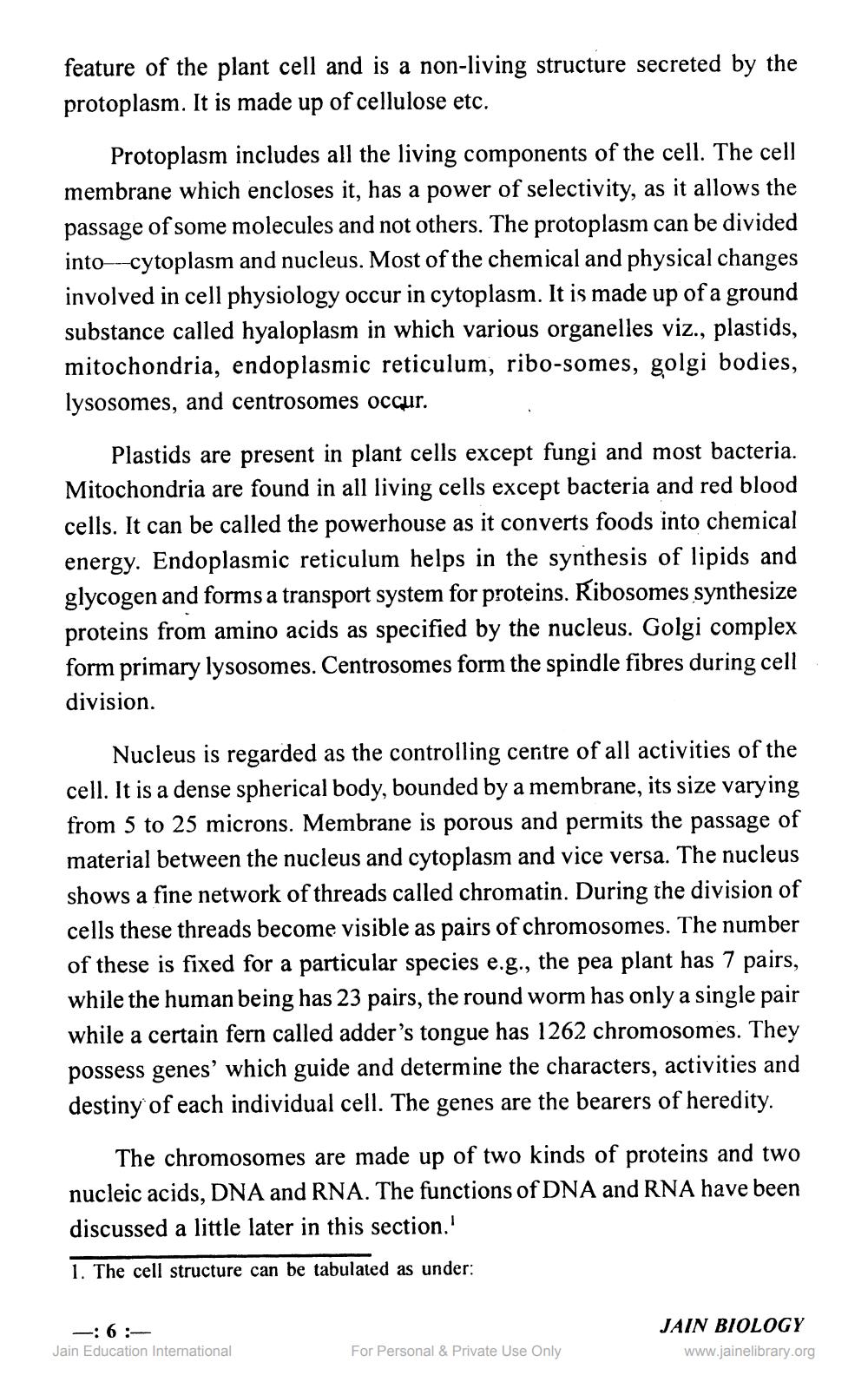________________
feature of the plant cell and is a non-living structure secreted by the protoplasm. It is made up of cellulose etc.
Protoplasm includes all the living components of the cell. The cell membrane which encloses it, has a power of selectivity, as it allows the passage of some molecules and not others. The protoplasm can be divided into cytoplasm and nucleus. Most of the chemical and physical changes involved in cell physiology occur in cytoplasm. It is made up of a ground substance called hyaloplasm in which various organelles viz., plastids, mitochondria, endoplasmic reticulum, ribo-somes, golgi bodies, lysosomes, and centrosomes occur.
Plastids are present in plant cells except fungi and most bacteria. Mitochondria are found in all living cells except bacteria and red blood cells. It can be called the powerhouse as it converts foods into chemical energy. Endoplasmic reticulum helps in the synthesis of lipids and glycogen and forms a transport system for proteins. Ribosomes synthesize proteins from amino acids as specified by the nucleus. Golgi complex form primary lysosomes. Centrosomes form the spindle fibres during cell division.
Nucleus is regarded as the controlling centre of all activities of the cell. It is a dense spherical body, bounded by a membrane, its size varying from 5 to 25 microns. Membrane is porous and permits the passage of material between the nucleus and cytoplasm and vice versa. The nucleus shows a fine network of threads called chromatin. During the division of cells these threads become visible as pairs of chromosomes. The number of these is fixed for a particular species e.g., the pea plant has 7 pairs, while the human being has 23 pairs, the round worm has only a single pair while a certain fern called adder's tongue has 1262 chromosomes. They possess genes' which guide and determine the characters, activities and destiny of each individual cell. The genes are the bearers of heredity.
The chromosomes are made up of two kinds of proteins and two nucleic acids, DNA and RNA. The functions of DNA and RNA have been discussed a little later in this section.'
1. The cell structure can be tabulated as under:
-:6:
Jain Education International
For Personal & Private Use Only
JAIN BIOLOGY www.jainelibrary.org




